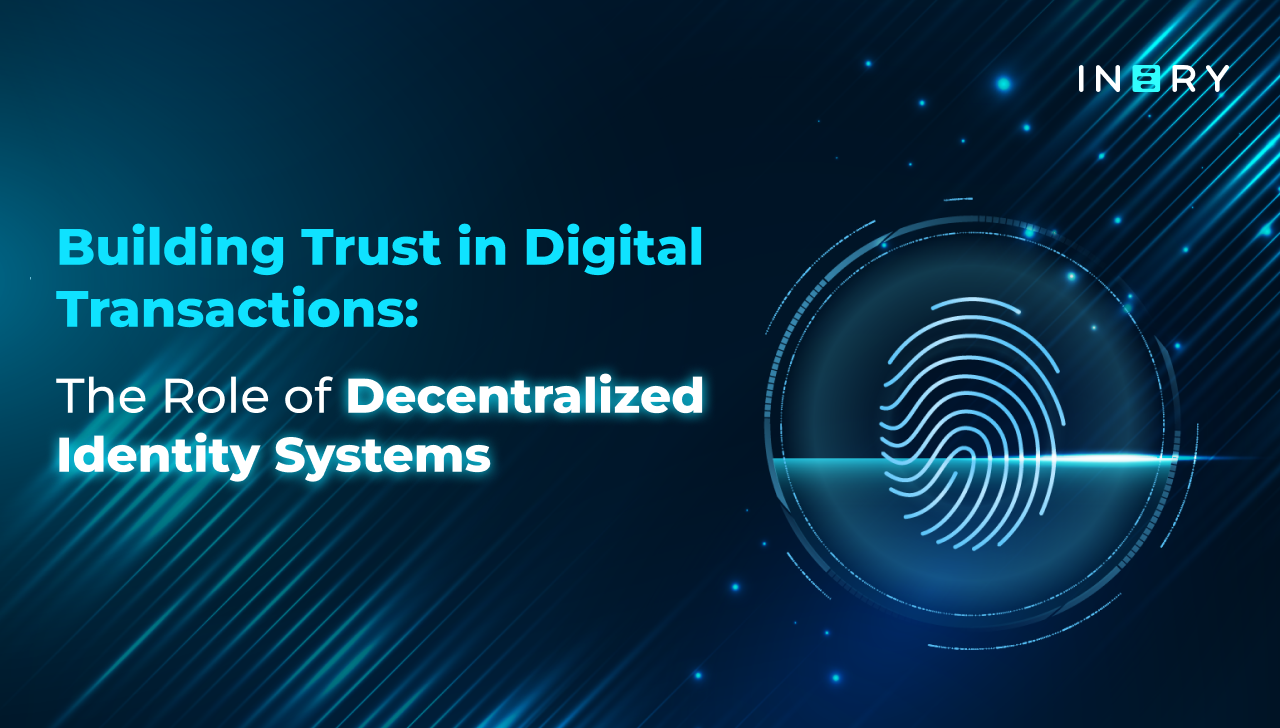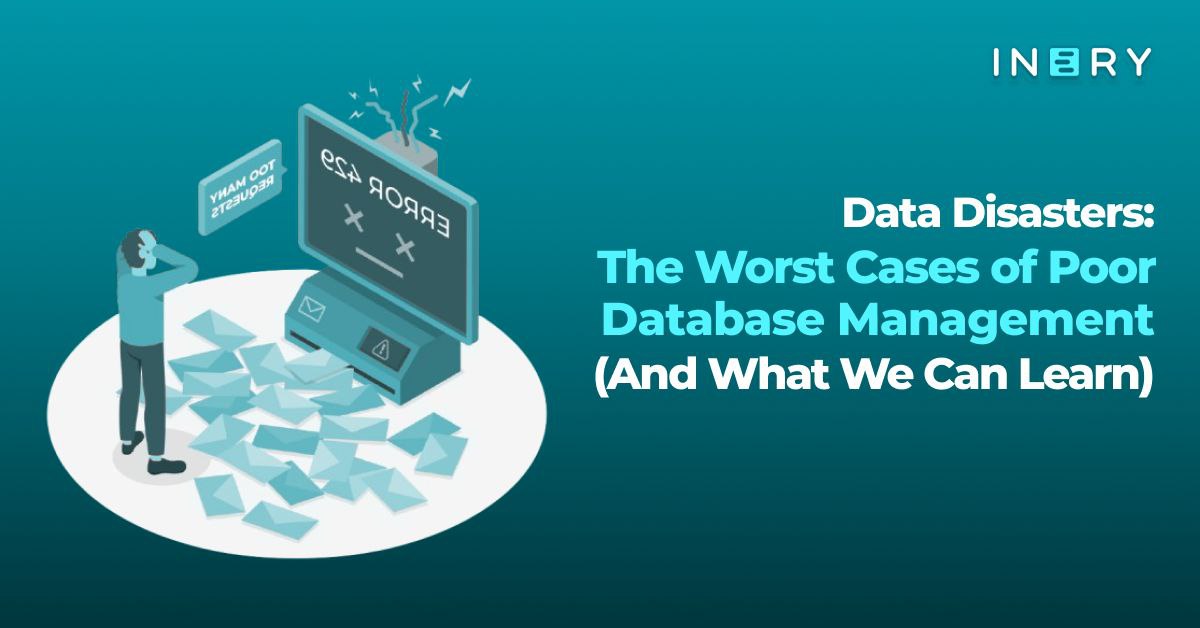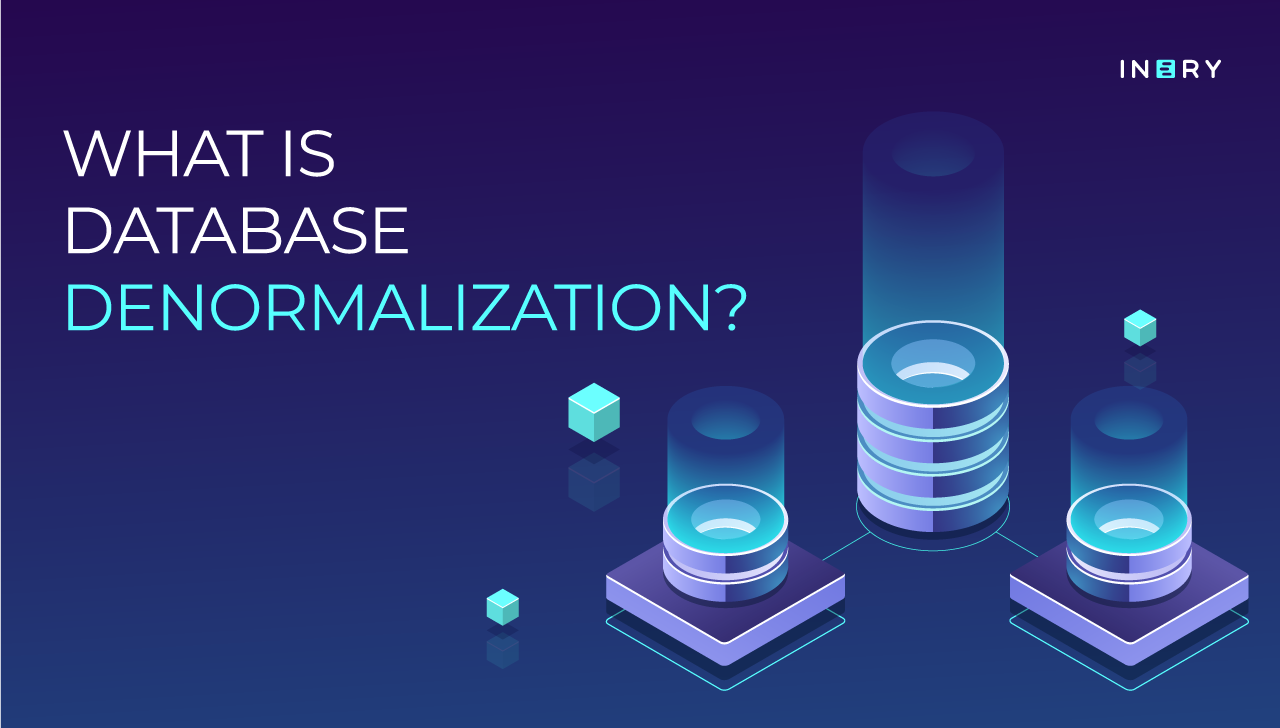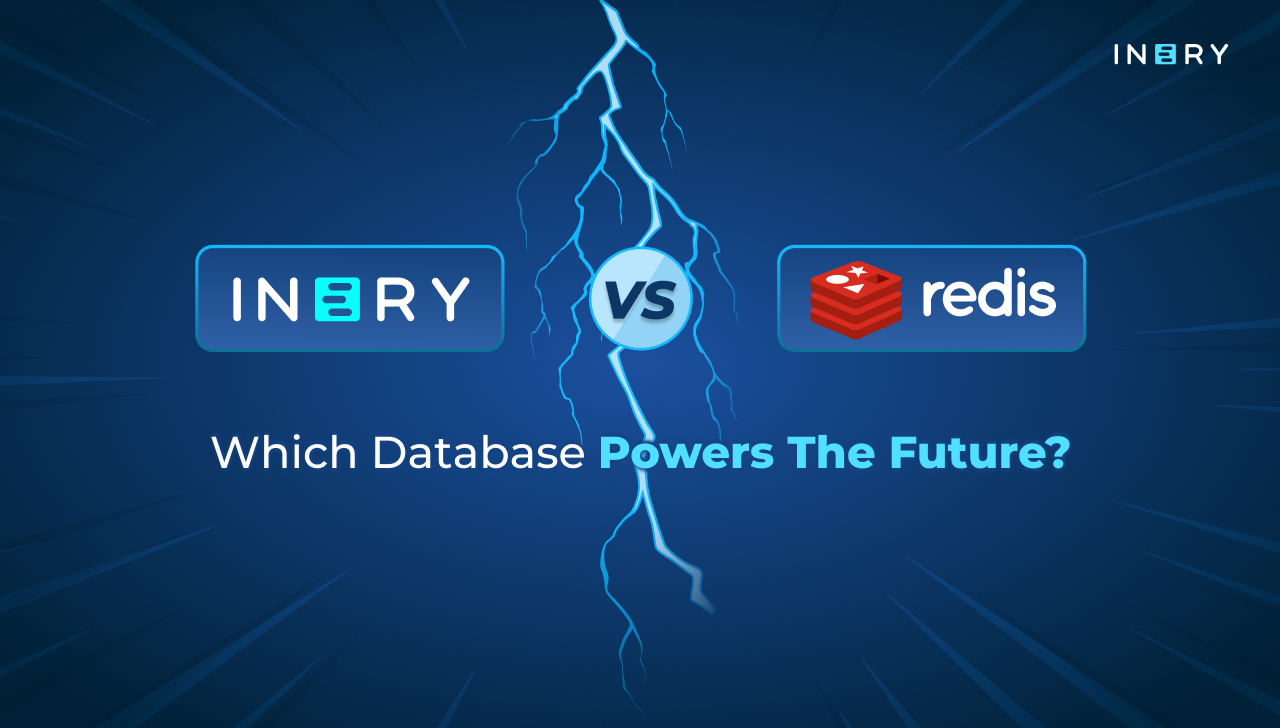When it comes to data, things can go really, really wrong. Picture this: you’re working in an organization that’s humming along fine, sales are up, everyone’s happy… until a single database error suddenly leaves entire customer files missing, payment records scrambled, or, in extreme cases, a satellite plummeting from the sky. Yes, these “data disasters” can be as dramatic as they sound, and sometimes even worse.
A “data disaster” isn’t just about losing a couple of files or a minor computer crash. It's when poor database management causes irreversible damage — like massive financial losses, tarnished reputations, regulatory backlash, and sometimes the collapse of entire systems or companies. In an era where organizations rely on data to run practically everything, even a small misstep in managing it can have enormous consequences.
Today, we’ll explore some of the most infamous cases where data management went spectacularly wrong, what we can learn from each one, and how solutions like Inery are helping businesses keep these catastrophes at bay.
Types of Data Disasters
Data disasters generally fall into a few main types, all of which could happen from lax database management. The first, data breaches, involve unauthorized access and exposure of sensitive data.
The second type, data loss, is about crucial information vanishing due to corruption, deletion, or database failures. A third, data mismanagement, involves database errors, such as mistyped entries or misconfigurations, that wreak havoc on entire systems.
And finally, there’s data inaccuracy, where outdated or incorrect data leads to misinformed decisions. Often, data disasters involve a mix of these issues, with one initial error triggering a chain reaction of escalating problems.
The Biggest Data Disasters Due to Poor Database Management
The worst cases of data disasters often make headlines, but there are countless smaller incidents that don’t. Here are some of the biggest and most recent disasters that were caused by inadequate database management.
The Knight Capital Group Trading Glitch (2012)
In 2012, Knight Capital Group, a prominent financial services firm, became a cautionary tale in data management. A simple software update turned catastrophic when an old, dormant program was reactivated due to a configuration error. This glitch caused a cascade of unintended stock orders, leading to a whopping $440 million loss in under 45 minutes. By the time they pulled the plug, the damage was done, and the firm was bankrupt by the next day. The lesson? Never skip testing, and always ensure your databases and software are harmonized to prevent legacy code from creeping into live environments.
Public Health England’s COVID-19 Reporting Fiasco (2020)
In 2020, the UK government faced backlash when it was revealed that around 16,000 COVID-19 cases had gone unreported due to an Excel spreadsheet error. The database limitations of Excel, which is not designed for managing massive datasets, led to a truncation of critical data as case numbers grew beyond the sheet’s capacity. This oversight not only compromised public health efforts but also highlighted the risks of using unsuitable tools for database management. Lesson learned: proper database software matters, especially when handling large volumes of mission-critical data.
The Equifax Data Breach (2017)
Equifax, a credit bureau managing sensitive data of millions, suffered a massive breach in 2017 when hackers exploited an unpatched vulnerability in their web application. This resulted in the exposure of personal information, including Social Security numbers, of over 147 million Americans. The failure to manage and update their database security protocols left them vulnerable, and the breach ultimately cost Equifax over $700 million in settlements. The incident is a sobering reminder that regular updates and security checks are non-negotiable when it comes to protecting sensitive data.
TSB Bank's IT Migration Failure (2018)
The UK’s TSB Bank tried migrating its database from its parent company’s servers to its own system in 2018, but the transition was riddled with errors. Customers lost access to their accounts, experienced incorrect balances, and even saw personal data of others. The database management failure resulted in operational chaos, customer mistrust, and regulatory scrutiny, costing TSB approximately £330 million. The takeaway here? Database migrations are complex and require meticulous planning, testing, and execution to avoid catastrophic disruptions.
Samsung Securities’ Accidental Stock Issuance (2018)
In South Korea, an employee at Samsung Securities accidentally issued shares worth $105 billion instead of paying a dividend of $1,000 to employees, due to a data entry error. This “fat-finger” mistake caused massive market chaos, shaking investor confidence and demonstrating how one small human error can destabilize an entire system. A preventive measure? Proper checks, balances, and safeguards are essential to reduce the risk of manual errors affecting entire markets.
Unity Technologies’ Ad Revenue Loss (2022)
Unity Technologies, a prominent name in software and game development, encountered a data disaster when incorrect data was ingested, leading to a $110 million loss in advertising revenue. The company’s targeting algorithms, essential for delivering effective ads, were rendered ineffective by the compromised data quality. Unity’s case shows how vital data accuracy is for operations and revenue — the wrong data can lead to wasted resources, lost revenue, and ultimately, operational failure.
Why Data Disasters Are So Dangerous
Data disasters have a unique ability to spiral out of control. A single misconfiguration, outdated software, or unchecked database entry can unleash a wave of consequences that ripple across an organization. Financially, data disasters can drain funds quickly, especially when downtime, customer refunds, and regulatory penalties come into play. For organizations that handle sensitive information, the fallout is often even worse — a breach or loss of data can break customer trust, drive away clients, and attract strict regulatory scrutiny, resulting in costly fines and legal settlements.
From an operational standpoint, poor database management disrupts workflows and slows down productivity. A glitch in a database or a data loss event can halt essential operations, leaving employees and clients frustrated and the organization scrambling for solutions. On a larger scale, data disasters can permanently damage a brand’s reputation. It’s tough for a company to shake off the stigma of a high-profile failure, especially when it affects customers directly.
Enter Inery: A Solution for the Future
So, how can businesses protect themselves from these disasters? The answer lies in smarter, more secure database management solutions — like Inery. Inery offers a decentralized database management system (DDBMS) powered by blockchain technology, specifically designed to prevent the very issues that lead to data disasters.
Inery’s solution hinges on two key principles: data security and integrity. In a traditional centralized database, all data resides in one location, making it vulnerable to breaches, system failures, and even human errors. But Inery’s decentralized model distributes data across multiple nodes, eliminating a single point of failure and reducing the risk of unauthorized access. Each node operates independently but also syncs continuously, so if one goes down, the others keep the system intact. This means organizations using Inery can rely on a more resilient infrastructure that safeguards against loss and tampering.
Inery’s use of blockchain technology takes data integrity to the next level. With each transaction or data modification, a digital signature is created and recorded on an immutable ledger. This makes it nearly impossible for anyone to alter records undetected. In cases like Equifax’s data breach, for example, Inery’s architecture could have prevented unauthorized access to sensitive records by making data modifications traceable and secure.
What sets Inery apart is its capacity for handling structured data seamlessly, making it versatile enough for industries as varied as healthcare, finance, and aviation. For organizations like TSB Bank or Knight Capital, which suffered due to poorly managed migrations and unmonitored legacy code, Inery offers an alternative approach. Its Value Contracts allow for customizable workflows that enforce specific actions and permissions directly on the database level, minimizing the risks of legacy issues and software conflicts.
Another key feature of Inery is its Delegated Proof-of-Stake (DPoS) consensus mechanism, which provides a low-latency, scalable solution ideal for organizations that need to handle large amounts of data quickly. In industries like healthcare or logistics, where real-time data access can be critical, this approach ensures quick, secure, and reliable data handling without compromising security.
Finally, Inery’s approach to data management also includes real-time monitoring through WebSocket protocols. This feature is particularly useful for large organizations needing constant oversight of their database environment. In the case of Unity Technologies’ revenue loss, real-time monitoring could have caught the error early, allowing for a quick response to prevent widespread impact.
Conclusion: Learning from Data Disasters
Data disasters, as we’ve seen, are often caused by the simplest mistakes or oversights — misconfigurations, unpatched software, or outdated tools. These disasters cost more than just money; they put an organization’s entire reputation, operations, and customer relationships on the line. But solutions like Inery are helping turn the tide by offering a smarter, more resilient approach to data management.
By decentralizing data storage, incorporating blockchain for data integrity, and enabling real-time oversight, Inery equips organizations to handle data responsibly and securely. For companies looking to avoid making headlines for all the wrong reasons, adopting more advanced database solutions is essential. After all, in a world that runs on data, the stakes couldn’t be higher.

Inery•
1 year ago
The Future of Data Security in Remote or Hybrid Work Environments
Explore the evolution of remote work, its impact on data security, and how companies can safeguard their information in an increasingly hybrid work environment. ...READ MORE
-1721906313.png)
Share

Inery•
1 year ago
Building Trust in Digital Transactions: The Role of Decentralized Identity Systems
Learn how decentralized identity systems supported by blockchain, like Inery, provide a secure, private, and controlled way to manage digital identities and build trust online. ...READ MORE

Share

Inery•
1 year ago
Inery Tehnical Roadmap 2024
Discover Inery's 2024 Technical Roadmap, a testament to our dedication in revolutionizing blockchain technology. Explore milestones from refining Inery Blockchain V-2.0.0 to enhancing IneryQL and GUI, shaping the future of Web3 with groundbreaking advance ...READ MORE

Share

Inery•
2 years ago
The Top 5 Layer-1 Blockchains: Building the Foundation
These top layer-1 blockchain projects are setting the standard for cryptos and decentralized technology. ...READ MORE

Share
Most popular today



